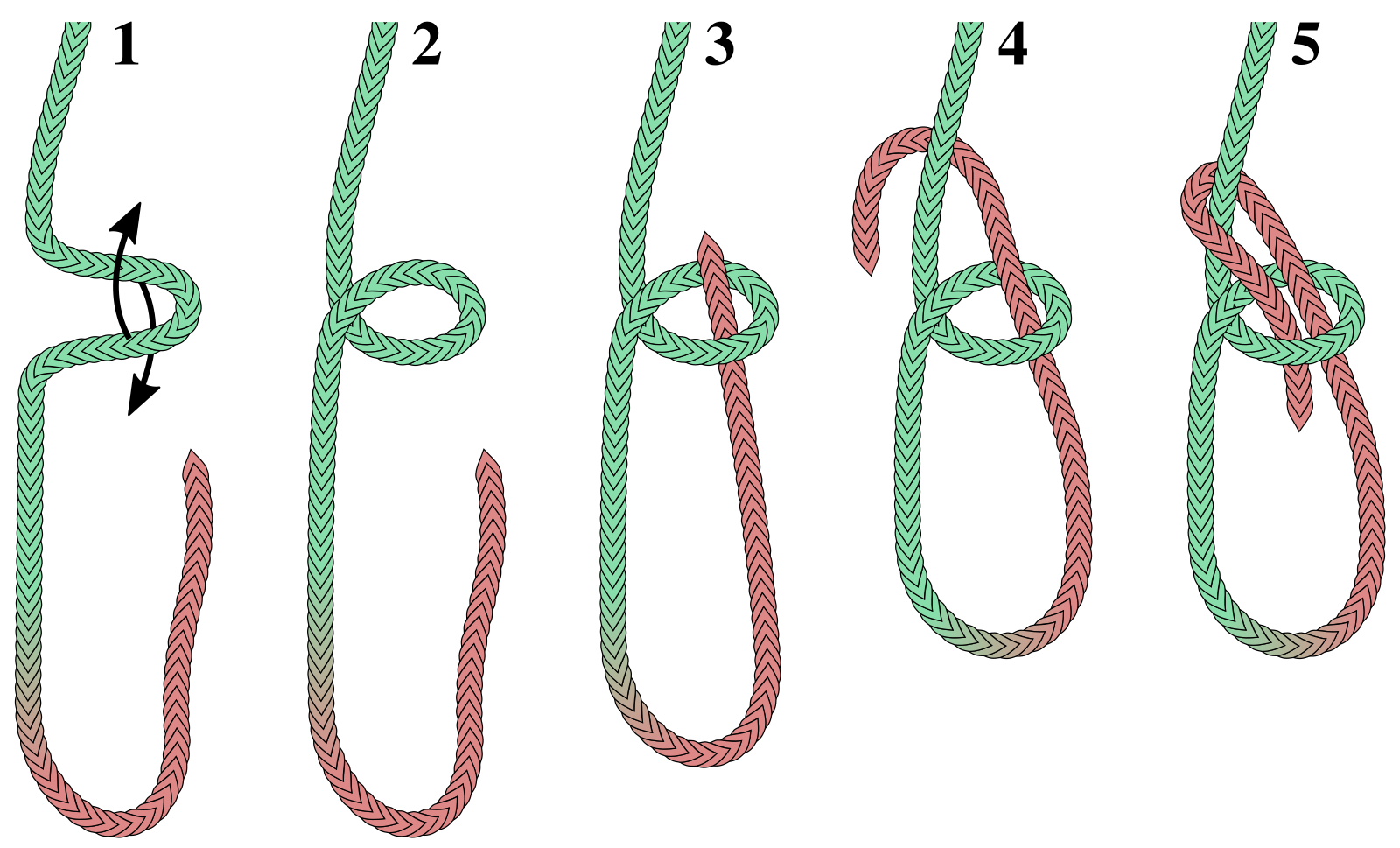|
Portuguese Bowline
The Portuguese bowline ( pt, Nó volta do calafate; also known as the French bowline and Lisbon surprise) is a variant of the bowline with two loops. The two loops are adjustable in size. Rope can be pulled from one loop into the other, even after tightening. The knot can be used as a makeshift Bosun's chair. Tying It is tied in a way that is similar to regular bowlines. File:Portuguese Bowline step 1.jpg, Make an overhand loop (loop with the working end on top). File:Portuguese Bowline step 2.jpg, Put the working end through the loop. File:Portuguese Bowline step 3.jpg, Put it through again. From here, the steps are the same as the regular bowline. File:Portuguese Bowline step 4.jpg, Put it around the standing end and back through the loop. See also *List of knots This list of knots includes many alternative names for common knots and lashings. Knot names have evolved over time, and there are many conflicting or confusing naming issues. The overhand knot, for example, is a ... [...More Info...] [...Related Items...] OR: [Wikipedia] [Google] [Baidu] |
Spanish Bowline
The Spanish bowlineThe complete guide to knots and knot tying — Geoffrey Budworth — p.190 — is a double loop knot that can be used to lift a person. For a conscious person, each loop is placed around a leg and the person holds onto the standing part of the rope. This knot can serve as a makeshift Bosun's chair. For an unconscious person one loop is placed around the arm pits and the second loop is placed around the knees. This knot has an elegant symmetry and can be tied quickly when mastered. Unlike the Portuguese bowline, each loop is separately fixed, which is a nice feature. It is a complicated knot however and if not properly tightened, it can slip. A fireman's chair knot is another double loop knot which is more practical, easier to tie and less prone to slipping although it lacks the elegance of a Spanish bowline. Image:Spanischer_Palstek_hinten.jpg, From behind Image:Spanischer_Palstek_vorne.jpg, From the front See also *List of knots This list of knots in ... [...More Info...] [...Related Items...] OR: [Wikipedia] [Google] [Baidu] |
Bowline
The bowline ( or ) is an ancient and simple knot used to form a fixed loop at the end of a rope. It has the virtues of being both easy to tie and untie; most notably, it is easy to untie after being subjected to a load. The bowline is sometimes referred to as ''King of the knots'' because of its importance. Along with the sheet bend and the clove hitch, the bowline is often considered one of the most essential knots. The common bowline shares some structural similarity with the sheet bend. Virtually all end-to-end joining knots (i.e., bends) have a corresponding loop knot. Although the bowline is generally considered a reliable knot, its main deficiencies are a tendency to work loose when not under load (or under cyclic loading), to slip when pulled sideways, and the bight portion of the knot to capsize in certain circumstances. To address these shortcomings, a number of more secure variations of the bowline have been developed for use in safety-critical applications, or by s ... [...More Info...] [...Related Items...] OR: [Wikipedia] [Google] [Baidu] |
List Of Knots
This list of knots includes many alternative names for common knots and lashings. Knot names have evolved over time, and there are many conflicting or confusing naming issues. The overhand knot, for example, is also known as the thumb knot. The figure-eight knot is also known as the Savoy knot or the Flemish knot. A * Adjustable Bend – can be easily lengthened or shortened * Adjustable Grip Hitch – a simple hitch which may easily be shifted up and down the rope while slack *Albright Special – used to tie two different diameters of line together, for instance to tie monofilament to braid *Alpine Butterfly (also known as Butterfly Loop) – a static loop mostly used by mountain climbers and rappellers for securing a carabiner to static rope. * Alternate Ring Hitching – covering a ring in hitching can prevent damage * Anchor Bend – attaching a rope to a ring or similar termination *Angler's Loop – knot which forms a fixed loop. Useful for fine or slippery line, it is ... [...More Info...] [...Related Items...] OR: [Wikipedia] [Google] [Baidu] |
